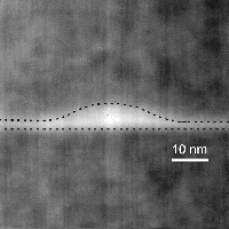Nano Characterization
The development of nanostructures with new functionality requires characterization techniques with spatial resolution down to the (sub)-nm range. These techniques use electrons, ions, and photons as probes and exploit their interaction with matter. Both the particle- and the wave nature of these probes are of relevance. In addition, mechanical tips are used e.g. in the scanning probe microscopy. The lecture gives an introduction into the relevant interactions and the applications for nano-characterization methods. The techniques are illustrated by a wide variety of examples from current research at nano materials.
The lecture encompasses the following topics:
- Scanning electron microscopy and transmission electron microscopy: Setup, functionality, interaction products
- Electron probes for material analysis (auger-spectroscopy, EELS, x-ray microanalysis)
- Ion probes for material analysis (Rutherford back-scattering, SIMS):
- Diffraction at crystal lattices and surfaces with electrons (RHEED, LEED) and photons (x-ray diffraction)
- Analysis of optical properties by cathodoluminescence and photolumisecence spectroscopy, spectroscopy on a (sub)-µm scale, time-resolved spectroscopy
- Raman spectroscopy, infrared spektroscopy
- Confocal microscopy
- Photoelectron spectroscopy
- Ellipsometry
- Scanning tunneling microscopy and atomic force micropscop
The lecture is given during the winter semester.
Contact: Dr.-rer. nat Tilmar Kümmell
BA 112, 0203 / 379-3403


